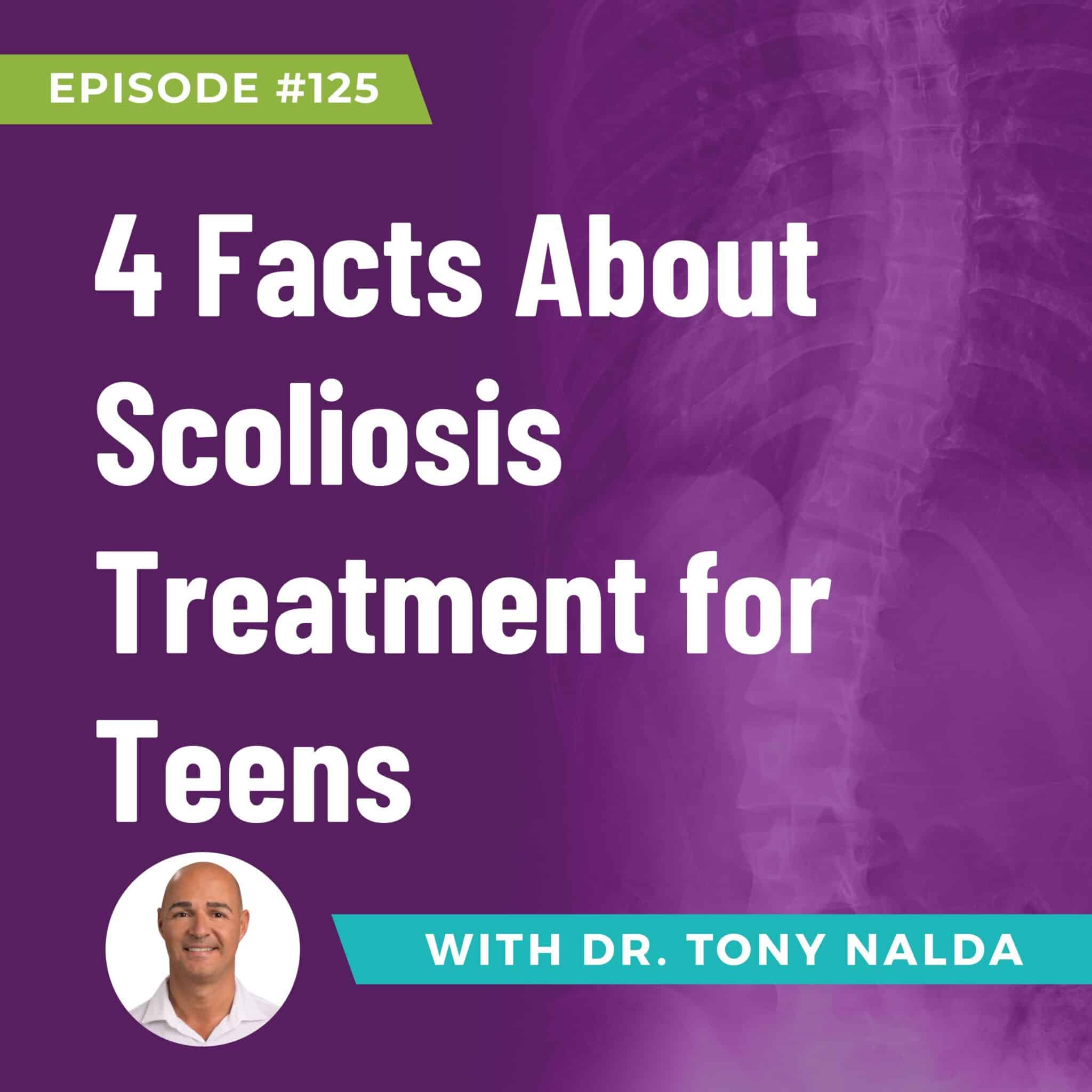Episode 125: 4 Facts About Scoliosis Treatment for Teens
Table of Contents
Unveiling Scoliosis: A Lifelong Journey Through Progressive Stages
In this episode of the "Scoliosis Treatment with Dr. Tony Nalda," we explore the progression of scoliosis through different life stages, focusing on how growth, hormonal changes, and aging influence the condition, with a particular emphasis on the impact of menopause on women.
Scoliosis Overview and Types
Scoliosis is a spinal condition characterized by an abnormal lateral curvature and is primarily classified into several types depending on the age of onset and underlying causes:
- Idiopathic Scoliosis: Predominantly found in adolescents, this type lacks a definitive cause and accounts for approximately 80% of all cases. It is most noticeable and diagnosed during puberty when children undergo rapid growth spurts.
- Neuromuscular Scoliosis: Linked to conditions like cerebral palsy or Ehlers-Danlos syndrome, this type stems from muscle or nerve abnormalities that affect spinal alignment.
- Congenital Scoliosis: This form arises from spinal malformations present at birth, typically involving abnormally shaped vertebrae like a hemivertebra.
- Degenerative Scoliosis: Often developing in adults over 50, particularly post-menopausal women, this type results from spinal degeneration and asymmetrical wear, commonly affecting the lumbar spine.
- Traumatic Scoliosis: Caused by spinal injuries, this type can occur at any age following significant trauma to the spine.
The Impact of Menopause on Scoliosis
Menopause significantly affects women with or at risk of scoliosis due to hormonal changes that influence bone density and spinal health. As estrogen levels decline, bones become more susceptible to compression and wear, which can exacerbate or trigger the onset of scoliosis in later life, particularly:
- Degenerative 'De Novo' Scoliosis: This form occurs in individuals without a prior history of scoliosis. It arises as the spine begins to deteriorate asymmetrically due to aging, compounded by menopausal changes.
- Progression of Existing Scoliosis: For women who had adolescent idiopathic scoliosis, menopause can lead to a rapid progression of their condition due to decreased bone density and increased vulnerability to spinal compression.
Gender Differences in Scoliosis
- Adolescence: Girls are significantly more likely to develop scoliosis than boys during adolescence, attributed to earlier and more rapid growth spurts, which can quickly exacerbate spinal curvatures.
- Adulthood: Women are also more prone to developing scoliosis as they age, especially post-menopause, due to hormonal changes that affect bone strength and spinal integrity.
Proactive Management and Treatment
Early detection and proactive management are crucial across all stages of life but become particularly important during key phases such as adolescence and menopause:
- Adolescence: Early intervention can prevent the progression of scoliosis during growth spurts. Smaller curvatures respond better to treatment, making early action essential.
- Menopause: For post-menopausal women, managing bone density and closely monitoring any changes in spinal alignment can help control the progression of scoliosis.
Conclusion
Understanding scoliosis as a condition that can evolve with a person's hormonal and biological changes underscores the importance of lifelong monitoring and tailored treatment strategies. Whether it's during the rapid growth of adolescence or the hormonal shifts of menopause, proactive and informed care can lead to better management of scoliosis, reducing the need for invasive treatments and maintaining a higher quality of life.
For more insights into managing scoliosis across different life stages, continue following our podcast series and subscribe for updates on the latest in scoliosis treatment and care.
Artlist.io 847544
Podcast: Play in new window | Download
Subscribe: RSS
Dr. Tony Nalda
DOCTOR OF CHIROPRACTIC
After receiving an undergraduate degree in psychology and his Doctorate of Chiropractic from Life University, Dr. Nalda settled in Celebration, Florida and proceeded to build one of Central Florida’s most successful chiropractic clinics.
His experience with patients suffering from scoliosis, and the confusion and frustration they faced, led him to seek a specialty in scoliosis care. In 2006 he completed his Intensive Care Certification from CLEAR Institute, a leading scoliosis educational and certification center.
About Dr. Tony Nalda
 Ready to explore scoliosis treatment? Contact Us Now
Ready to explore scoliosis treatment? Contact Us Now








